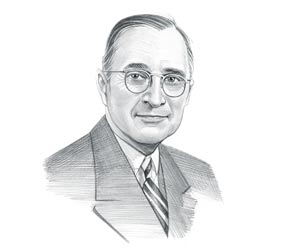|
|
|
|
|
The Soviet blockade was mounted due mounting tensions between the East and the West due to the continuing dispute over war reparations and actions taken by the USSR to loot and drain the economy of East Germany and Eastern Berlin. The United States and the British responded to the blockade with the Berlin Airlift.
Berlin Blockade Facts
for kids: Definition of Blockade Facts about
Berlin Blockade At the end of World War 2, on June, 5 1945, The Allied Control Council (ACC), with representatives from each of the Allied powers, announced the division of Germany. Germany was split into four zones of occupation (the Soviet Union, the United States, Great Britain and France) and split between the two blocs as communist controlled Eastern Germany and democratic Western Germany. Following WW2 a period of "non-hostile belligerency", referred to as The Cold War, evolved primarily between the USA and the USSR The "Iron Curtain" was the term that was used to describe the boundary that separated the communist dominated countries of the East and the free democratic countries of the West Berlin was the capital of Germany and lay in the Soviet (eastern) sector of Germany and was also divided into the four zones. The city of Berlin, divided by four zones of occupation, was located 100 miles (160 km) inside Soviet-controlled eastern Germany (see map). One railroad and one highway and were set aside for Western use. The Allied Control Council (ACC) also approved three, 20 mile wide, air corridors from Hamburg, Buckeburg and Frankfurt which secured Western access to Berlin. The Americans and the British tried to restore German prosperity in their sectors, but the Russians systematically looted their zone In January 1947, the British and the Americans joined their two zones together to help kickstart German industry. They called the new zone Bi-zonia meaning ‘two zones’). Disputes continued over German war reparations and tensions between the Soviets and Americans escalated with the Truman Doctrine on March 27, 1947 followed by the Marshall Plan a US-financed relief package that includes $1,390,600 worth of aid to Germany.. Pressure mounts in the city in April 1947 as Russia imposes a PARTIAL blockade of the city. Allied transport into the city has to apply for a permit and the USSR demand to inspect all western trains going into the city. In June 1948 America, Britain and France united their zones into the new country of West Germany and announced plans for a new deutschmark to replace the former, worthless German currency. The new currency caused economic chaos in the Russian zone as East Germans clamored to get rid of their old money and change to the new currency On June 23, 1948 the Soviets cut power to West Berlin and then begin a full blockade of the city and all road, rail, tunnels and water access by barges from the Western zones to Berlin is stopped. The Berlin blockade by the Soviets leaves the western half of the city in a perilous position as it is estimated that there is only enough food for 36 days. There were 2 million west Berliners. Military forces in the western sectors of the city numbered 8,973 Americans, 7,606 British and 6,100 French. All the entry points to the Western zones of Berlin by road and rail were blocked as the Soviets attempted to starve the Western allies out of the capital and abandon the city. The US and the British responded to the blockade by supplying the western part of the city by air. The Berlin Airlift supplied vital necessities by aircraft to Templehof airport for 318 days, from June 1948 to September 1949 to keep West Berlin alive and functioning. The situation in the city, referred to as the Berlin Crisis, brought the United States and USSR to the brink of war. On 12 May 1949, Joseph Stalin abandoned the blockade of the city. |
| US American History |
| 1945-1993: Cold War Era |
|
|
|
|
|
First Published2016-04-19 | |||
|
Updated 2018-01-01 |
Publisher
Siteseen Limited
| ||
|
|

